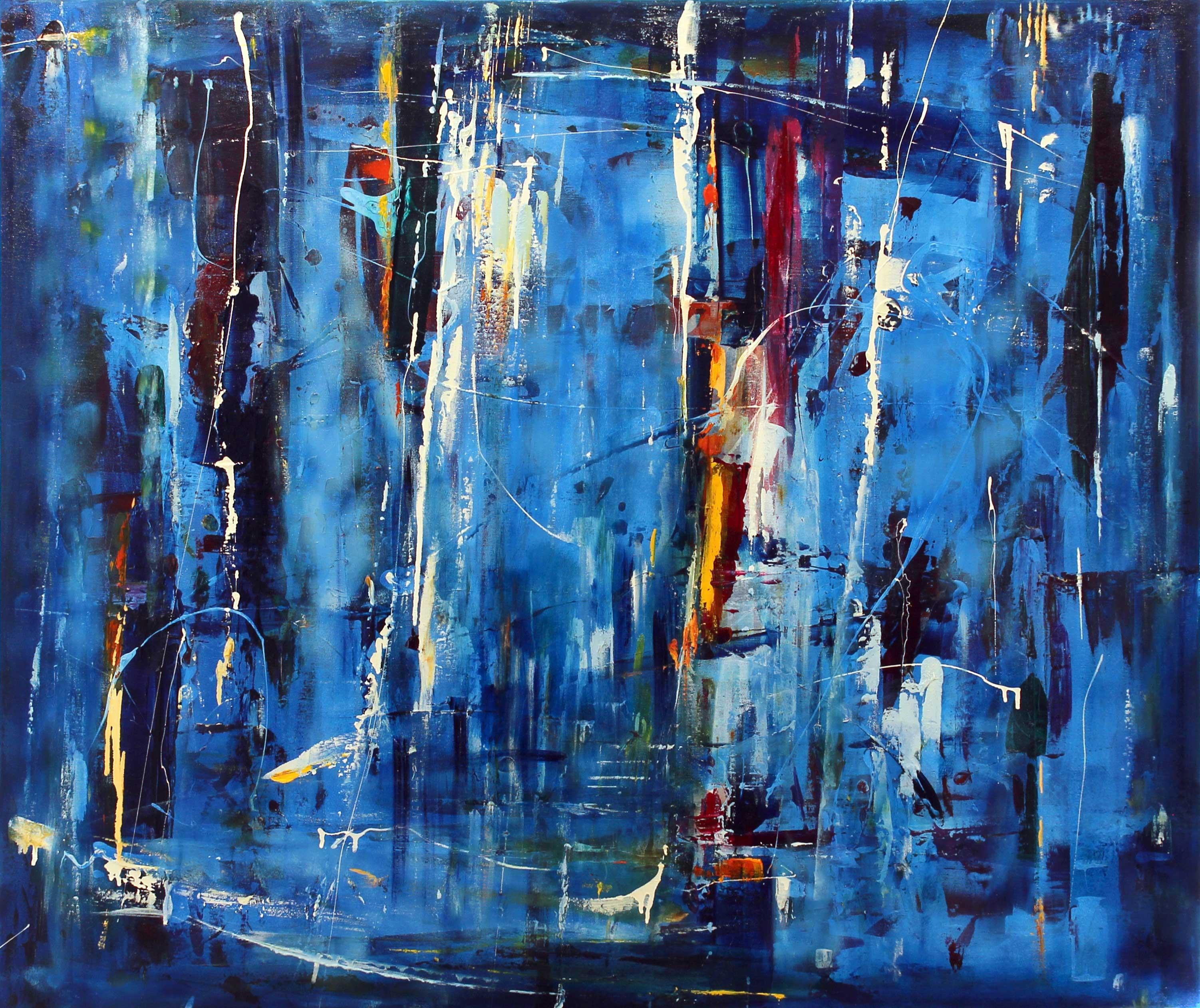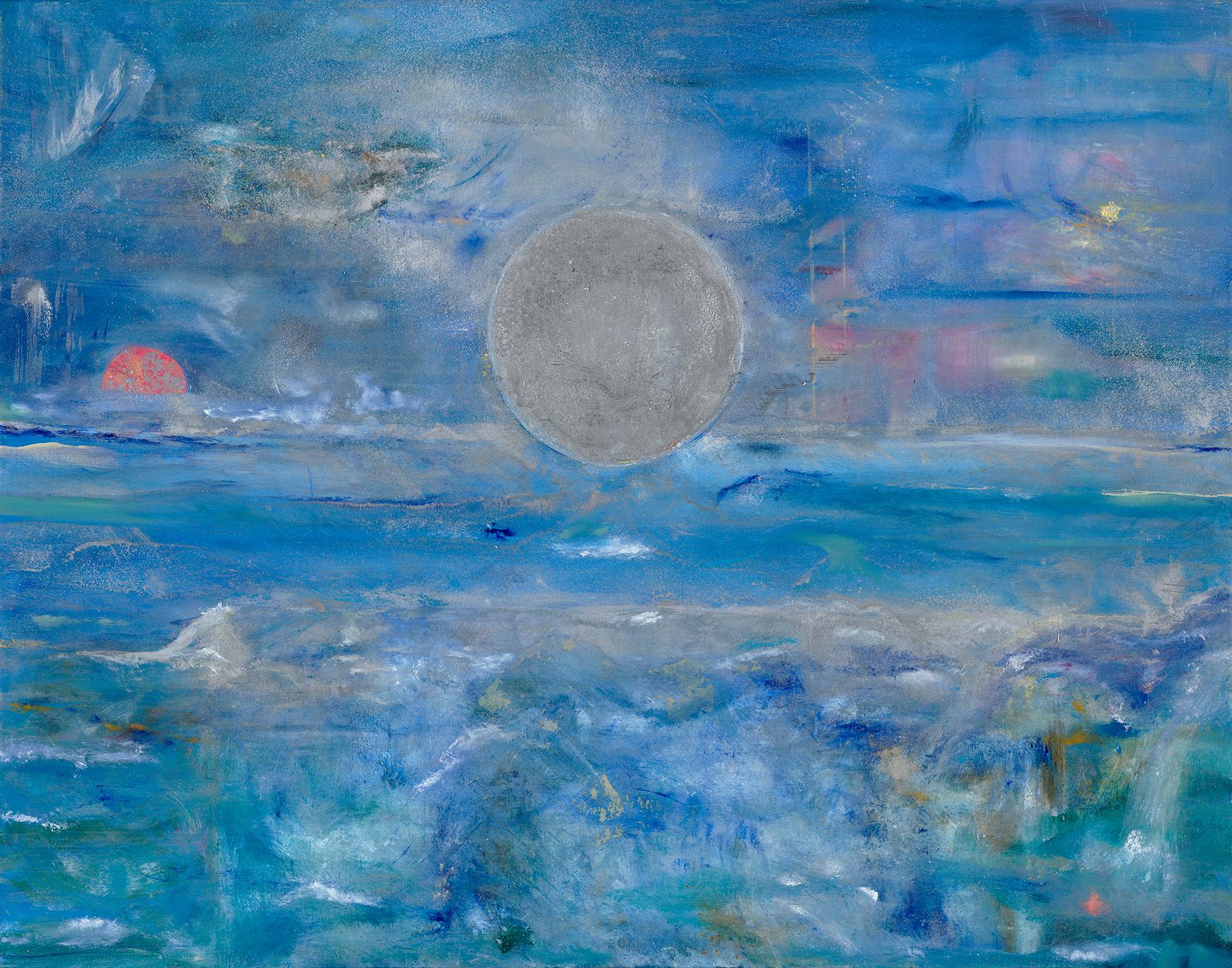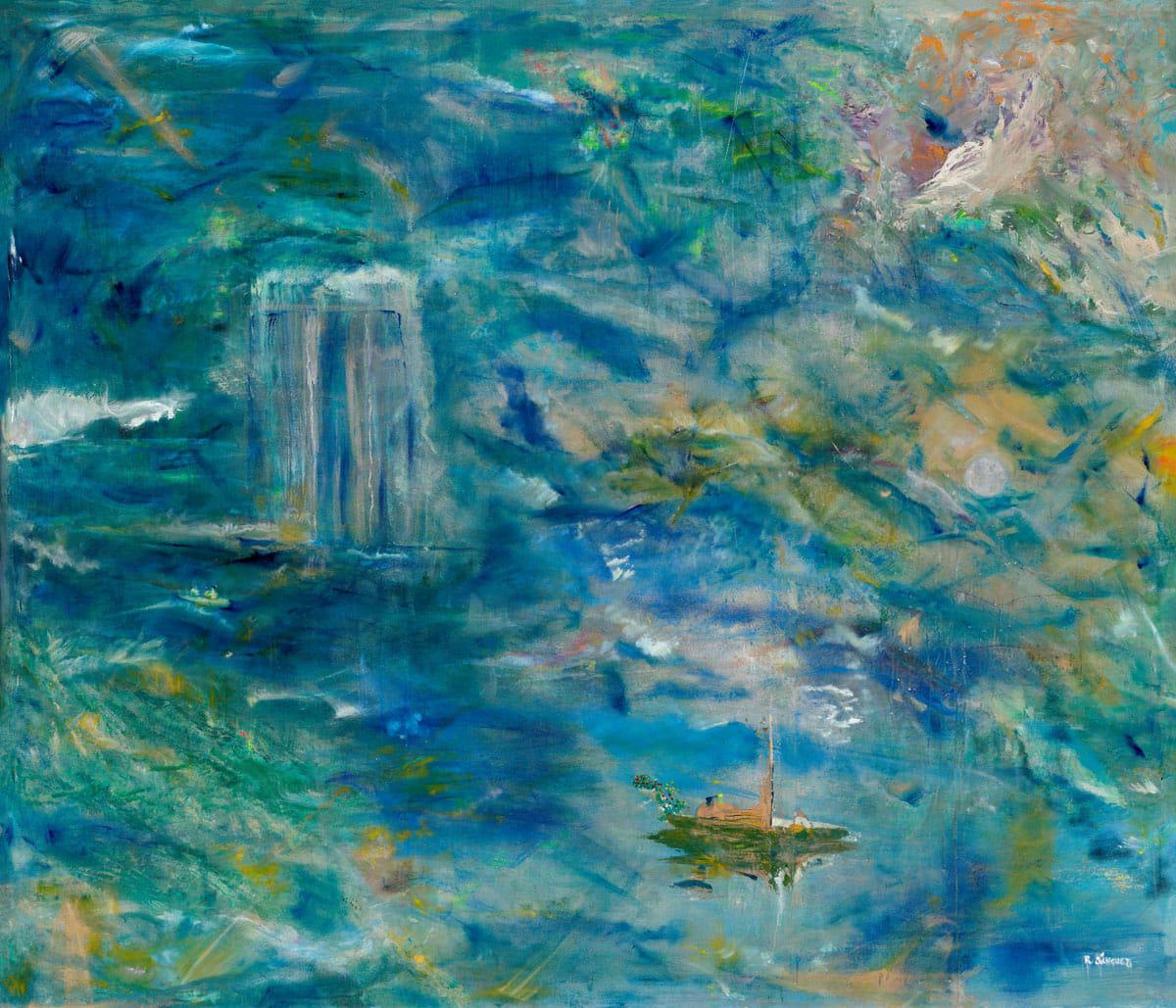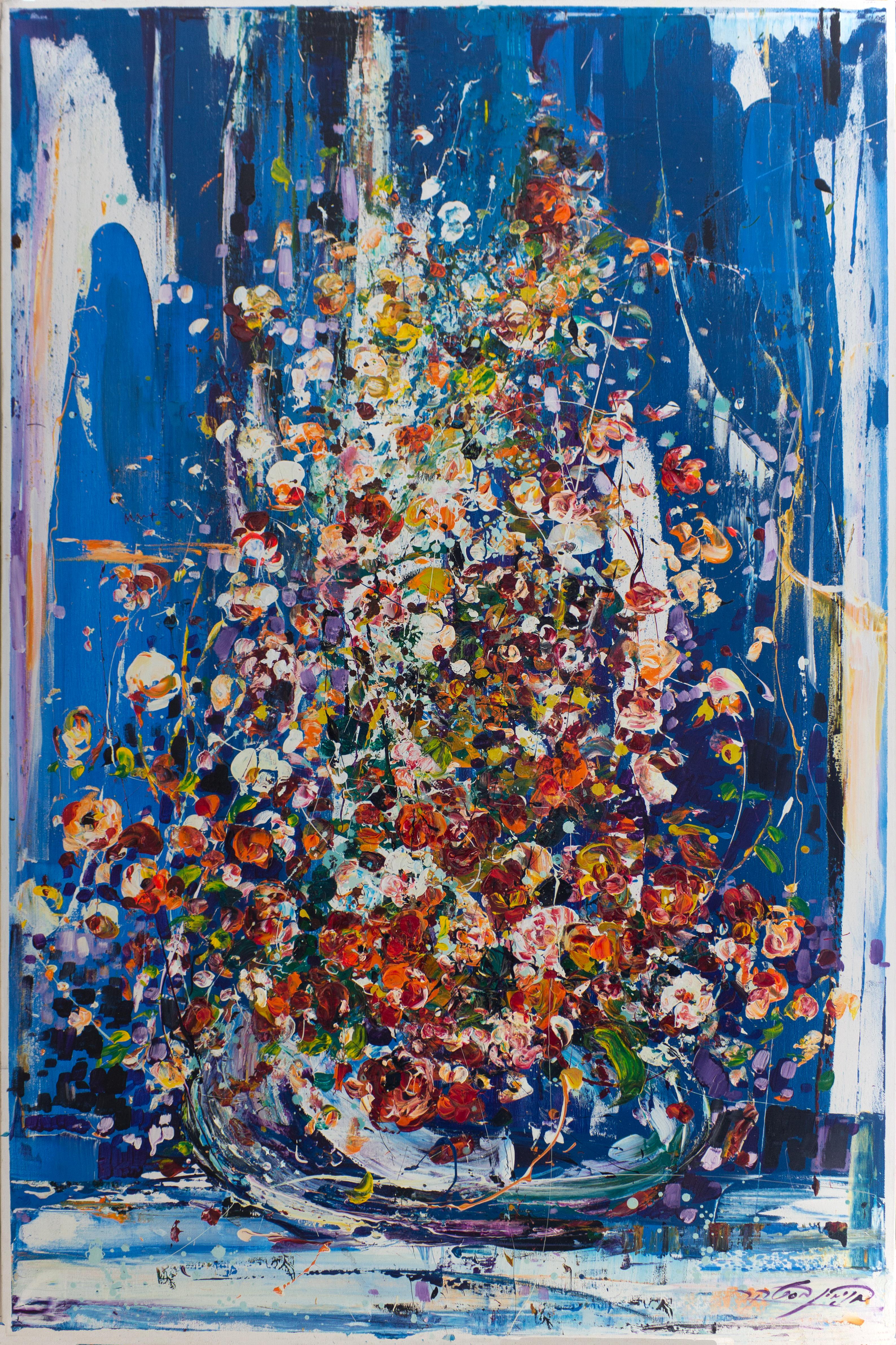Items Similar to Nature Morte - A Still Life , Oil on Canvas
Want more images or videos?
Request additional images or videos from the seller
1 of 9
Claude VernardNature Morte - A Still Life , Oil on Canvas
About the Item
Claude Venard
1913 - 1999
This painting comes with a certificate of authenticity.
Canvas Size: 21.5 x 25.75" (54 x 65cm)
Outside Frame Size: 29.5 x 33.75" (73.75 x 84.25)
Claude Venard was born in Burgundy in 1913, and decided to become a painter at seventeen, studying art at the Ecole des Arts Appliques in Paris for six years. Financial pressures initially forced him to work as a picture restorer at the Louvre, but by 1938 he was exhibiting at the first exhibition in Paris of the influential group ‘Forces Nouvelles’, alongside Roger Humblot, Andre Marchand, and Pierre Tal-Coat.
Claude Venard quickly became known for his rich impasto, and varying textures. He participated in the acclaimed Ecole de Paris group exhibitions at the Galerie Carpentier, and helped found the revolutionary Salon de Mai in 1944, which played an essential role promoting avant-garde abstract painters in Paris.
Claude Venard’s unique and alluring compositions developed through the post-cubist method, deftly combining abstraction and naturalism. Coupled with his use of vibrant and strong colour, often applied with a palette knife to achieve a rich impasto, his optimistic attitude and obvious enjoyment of life imbues everyday objects, and his views of Paris, with an undeniably French’ joie de vivre‘. He said of his approach to his paintings ‘One must be wary of works that seduce at first sight ; I do not mean that ugliness is a virtue, but a painting should be powerful without the use of trite devices’.
Claude Venard’s career until his death in 1999 was highly successful internationally. He held numerous one man shows in Paris and throughout France annually from 1944 until a final retrospective in 2000 just after his death. He also had many solo exhibitions in the USA, predominantly in New York, and in Germany, South America and Canada, and participated in many group shows in France and the USA, and in London at the Leicester Gallery, Lefevre Gallery and Arthur Tooth Gallery. In 1956 he was an exhibitor at the Venice Biennale.
Examples of his paintings are held at:
Tate, London,
Musee d’Art Moderne, Paris,
Metropolitan Museum of Art, New York,
Montreal Museum of Fine Arts, Canada,
Musee des Beaux Arts, Rouen,
Neue Pinakothek, Munich,
Sao Paulo Museum of Art, Brazil
Dallas Museum of Art, USA
- Creator:Claude Vernard (1913 - 1999, French)
- Dimensions:Height: 30 in (76.2 cm)Width: 34 in (86.36 cm)Depth: 3 in (7.62 cm)
- Medium:
- Movement & Style:
- Period:
- Condition:The painting has a sketch by the artist on the reverse of the canvas.
- Gallery Location:St. Albans, GB
- Reference Number:1stDibs: LU2469214043362
About the Seller
5.0
Gold Seller
These expertly vetted sellers are highly rated and consistently exceed customer expectations.
Established in 1965
1stDibs seller since 2023
19 sales on 1stDibs
Typical response time: 2 hours
- ShippingRetrieving quote...Ships From: St. Albans, United Kingdom
- Return PolicyA return for this item may be initiated within 7 days of delivery.
More From This SellerView All
- Un Bouquet de Fleurs SpectaculaireBy Marcel DyfLocated in St. Albans, GBMarcel DYF 1899 - 1985 Oil on canvas Canvas Size 28 x 23" (72 x 60cm) Outside Frame Size: 36 x 31" (92 x 80cm) Free Shipping Dyf’s family lived in Paris, but he spent his childhood holidays in Normandy at Ault, Deauville, and Trouville. The artistic climate to which he was exposed in Paris and in Normandy was crucial during his youth, as innovative ideas and new thinking, born of the Impressionist and Post-Impressionist movements, formed ever widening circles of influence in Europe. Swept up in the atmosphere, Dyf decided in his early twenties to give up his career in engineering and become an artist. He moved to Arles in 1922 to pursue his calling and he kept a studio there until 1942. He had little formal artistic training but owed much of his inspiration to the great masters of the past such as Rembrandt, whom he particularly admired, Vermeer and Tiepolo. In Provence, challenged by a new range of colours and light, by new landscapes and images and under the same intense sky that lent its brilliance to Van Gogh’s art, Dyf graduated from painter to artist. Whilst living in Arles, Dyf was commissioned to paint a number of large historical and decorative works, mostly frescoes, in the town halls of Saint Martin-de-Crau and Les Saintes Maries-de-la-Mer, in Arles, in the Museon Arlaten and in the dining hall of the Collège Ampère. He also designed windows for the church of Saint Louis in Marseille. In 1935 Dyf took on Maximilien Luce’s old studio in the Avenue du Maine on the left bank. His partial return to Paris meant that he could work with many whose names became renowned for their highly original contributions to art, music, and literature. Paris hummed with creative vitality in the 1930s and Dyf was both participant and recipient in the atmosphere. Paris was shattered by the invasion of 1940. Like many others, Dyf left the city and returned to Arles, but he quickly had to abandon his home in the south and he took to the Maquis, entering the Résistance in Corrèze and the Dordogne. After the Liberation he returned to Arles to find the studio reduced to rubble in the fighting. He retreated, heavy-hearted, to Paris but the pull of the Midi was deep-rooted, so in time he returned and made a new base in Saint Paul-de-Vence. Thereafter he divided his time between Paris and the south. His pictures began to sell through galleries in Cannes, Nice, Marseille and Strasbourg. In Paris he exhibited and sold his paintings through the Salon d’Automne, the Salon des Tuileries and the Salon des Artistes Français. In the first half of the 50s Dyf worked in Paris throughout the winter and spent the summer in Cannes, where he set up a studio-gallery and established a regular following among American visitors to the Riviera. In 1955 the first paintings were bought from Dyf by Frost & Reed to be sold in London, thus heralding the formation of a remarkable and enduring relationship between artist and gallery. In the summer of 1954, Dyf met Claudine Godat. Aged 19, she was thirty-six years younger than Dyf and with her long fair hair, clear skin, vivacity and patience, she was what the artist felt to be his perfect model. It was simply love at first sight. There was an instant rapport between them and her arrival in his life acted as a catalyst, bringing Dyf’s art forward to the threshold of its most mature phase. In 1956, they married and bought a 16th century hunting lodge at Bois d’Arcy, near Versailles. This became their main home, but each winter they returned to Provence on painting trips, staying in Saint-Rémy or in the small village of Eygalières. The olive trees, the cane windbreaks and the grey-white crags of the Alpilles provided countless motifs for Dyf’s paintings of Provence, and his artistic and emotional attachment to the area endured to the end of his life. In 1960, at Claudine’s insistence, they first visited Brittany. They explored widely and finally came upon the Golfe du Morbihan. Dyf was enchanted with this remote, beautiful region. He immediately saw the potential for new subjects, in the still waters of the huge lagoon surrounded by rolling fields of wheat and tiny clusters of slate-roofed cottages, and he knew he must return to paint there. From that time on the seasons of the year followed the same pattern: autumn was spent at home near Versailles and in the late autumn or early spring Dyf and Claudine drove south and spent six or eight weeks in Provence. In May they left for Brittany, where they spent the summer in a house they had bought opposite the church in the village of Arzon. Two or three times a year Frost & Reed would visit Dyf and buy all the best of his works for their stock. Dyf could never work in an empty studio, he said that it deadens an artist’s inspiration, so immediately the paintings had left for London, he and Claudine would set off to the west or to the south in search of new inspiration. This annual round having been established, there followed many years of great fulfilment. The artist, free from the burden of running the more mundane side of his life, was now able to devote all his time to painting and through Frost & Reed, his sole world agent, he was guaranteed an outlet for his work. To watch Dyf paint was entrancing. Even as an old man, he would stand rather than sit before the easel, working with extraordinary vigour and intense concentration. His palette was a rainbow of fresh colours and his hand continually darted back and forth from the canvas. At intervals he would step back or consider briefly another picture before returning to the easel, his eye refreshed. Usually he sketched straight onto the canvas, which he set up on his travelling easel...Category
1960s Impressionist Still-life Paintings
MaterialsOil
- A Dog with Dead GameBy Jan WeenixLocated in St. Albans, GBJan Weenix Canvas Size: 32 x 26" (82 x 66cm) Outside Frame Size: 40 x 34" (102 x 86cm) This beautiful painting is unsigned but this is not unusual with Jan ...Category
Mid-18th Century Italian School Animal Paintings
MaterialsOil
- A Still Life of FlowersBy Dorothea SharpLocated in St. Albans, GBA wonderful example of Dorothea Sharp's still lifes. Full of vibrancy and effervescence this painting ,with her classic broad brush strokes, show her talent at its best. It is in a w...Category
Early 20th Century Impressionist Still-life Paintings
MaterialsOil
- Oyster and a Copper bowl with other CrustaceansBy Alfred Arthur Brunel De NeuvilleLocated in St. Albans, GBAlfred Arthur BRUNEL DE NEUVILLE A wonderful painting for any situation whether it is as a statement, piece due to the undoubted quality, or as a piece for a kitchen/dining area due...Category
1880s French School Still-life Paintings
MaterialsOil
- A Still Life of ChrysanthemumsLocated in St. Albans, GBGerardine Van de Sande Bakhuyzen Dutch, 1826 – The Hague – 1895 An outstanding opportunity to purchase one of Holland's most outstanding and no...Category
Mid-19th Century Dutch School Still-life Paintings
MaterialsOil
- 'A Still Life of Roses, grapes and an Ivory Vase' an antique oil paintingBy Edward LadellLocated in St. Albans, GBEdward LADELL Picture Size: 20 x 16" (50 x 40cm) Outside Frame Size: 26 x 22" (65 x 55cm) An exquisite example of Ladell's painting. Signed with his traditional stylistic monogram,...Category
1850s Victorian Paintings
MaterialsOil
You May Also Like
- Jacob's Ladder, 2021 oil on canvas oil on canvas 110 x 140 cm (43 x 55 in)By Raquel SanchezLocated in Jerusalem, ILRaquel Sanchez Jacob's Ladder , 2021 oil on canvas 110 x 140 cm (43 x 55 in) Exhibited: Jerusalem Biennale 2021 Influenced by the Impressionist and Modern masters, Raquel's perso...Category
2010s Abstract Expressionist Abstract Paintings
MaterialsOil
- Binyamin Basteker, The sounds of flowers (Jerusalem flower series) oil on canvasLocated in Jerusalem, ILBinyamin Basteker The sounds of flowers , 2020 oil on canvas 80 x 60 cm 31 x 24 in Exhibited: "Jerusalem Flowers", 2020 Rosenbach Contemporary, Jerusalem Binyamin Basteker was bo...Category
2010s Abstract Expressionist Abstract Paintings
MaterialsOil
- Binyamin Basteker, Spring Flowers , 2023 oil on canvas 70 x 60 cmLocated in Jerusalem, ILBinyamin Basteker Spring Flowers , 2023 oil on canvas 70 x 60 cm 28 x 24 in Binyamin Basteker was born in Mumbai in 1953. Growing up in a family of artists, his unique talent was ...Category
2010s Abstract Expressionist Abstract Paintings
MaterialsOil
- Omnipresence , 2018-21 oil on canvas 170 x 204 cm 67 x 80 inBy Raquel SanchezLocated in Jerusalem, ILRaquel Sanchez Omnipresence , 2018-21 oil on canvas 170 x 204 cm 67 x 80 in Exhibited: Jerusalem Biennale 2021 Influenced by the Impressionist and Modern masters, Raquel's person...Category
2010s Abstract Expressionist Abstract Paintings
MaterialsOil
- Binyamin Basteker, Bouquet of Flowers , 2023 oil on canvas 150 x 100 cmLocated in Jerusalem, ILBinyamin Basteker Bouquet of Flowers , 2023 oil on canvas 150 x 100 cm 59 x 39 in Binyamin Basteker was born in Mumbai in 1953. Growing up in a family of artists, his unique talen...Category
2010s Abstract Expressionist Abstract Paintings
MaterialsOil
- Binyamin Basteker, Mediterranean Sunset , oil on canvasLocated in Jerusalem, ILBinyamin Basteker Mediterranean Sunset , 2021 oil on canvas 70 x 120 cm 28 x 47 in Binyamin Basteker was born in Mumbai in 1953. Growing up in a f...Category
2010s Abstract Expressionist Abstract Paintings
MaterialsOil





